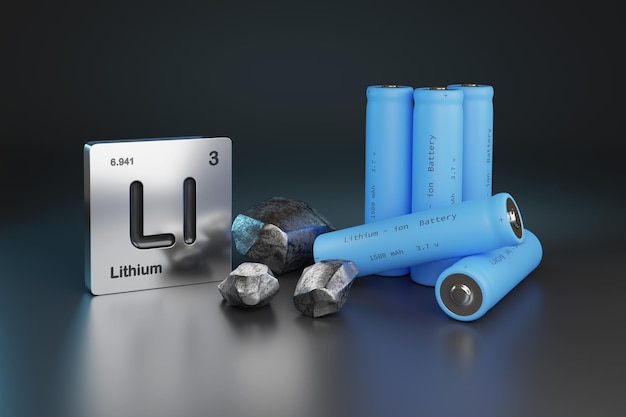In todays fast-paced world, lithium batteries have become an essential part of our daily lives, powering everything from smartphones and laptops to electric vehicles. But have you ever wondered how these remarkable devices truly work? At first glance, the inner workings of lithium batteries may seem daunting, cloaked in scientific jargon and intricate diagrams.
Yet, beneath that complex surface lies a fascinating process that is both straightforward and revolutionary. This guide is crafted for beginners, breaking down the science behind the lithium-ion battery into digestible pieces, unveiling the journey of electrons and ions as they ebb and flow, energizing our gadgets and ushering us into a more mobile future.
Let’s embark on this enlightening exploration together, demystifying a technology that powers our lives.
Basic Components of a Lithium Battery

A lithium battery, a marvel of modern technology, is composed of several essential components that work harmoniously to store and release electrical energy. At its core lies the anode, typically made of graphite, where lithium ions are housed during the battery’s resting phase.
Conversely, the cathode—often crafted from lithium cobalt oxide or similar materials—serves as the destination for ions during discharge, playing a vital role in energy conversion. Between these two poles sits the electrolyte, a chemical medium that facilitates the movement of ions while preventing direct contact between the anode and cathode, averting short circuits.
Additionally, a separator is crucial; it acts as a barrier to keep the electrodes apart, ensuring a controlled and efficient flow of electricity. When you delve deeper into a lithium battery’s architecture, you also encounter protective circuitry, which safeguards against overcharging and short circuits, enhancing the battery’s longevity and safety.
Together, these components create a dynamic system, where the dance of ions generates the power we rely on daily.
Types of Lithium Batteries

Lithium batteries come in several distinct types, each engineered to meet specific needs and applications. The most common variants include lithium-ion (Li-ion) and lithium polymer (LiPo) batteries.
Li-ion batteries, often found in smartphones and laptops, are renowned for their high energy density and rechargeable capabilities. They utilize a liquid electrolyte, which allows for efficient ion movement but can be bulkier in design.
On the other hand, LiPo batteries boast a flexible, lightweight design and are favored in drones and RC vehicles, offering the ability to be shaped into various forms. Beyond these, there are lithium iron phosphate (LiFePO4) batteries, prized for their thermal stability and safety, making them a popular choice for solar energy storage.
Each type, with its unique structure and chemical composition, plays a pivotal role in powering our modern world, from portable electronics to electric vehicles, illustrating the remarkable versatility of lithium technology.
Environmental Impact of Lithium Batteries

The environmental impact of lithium batteries is multifaceted, reflecting both the promising advantages and significant challenges associated with their production and disposal. On one hand, lithium batteries play a crucial role in reducing carbon emissions by powering electric vehicles and renewable energy storage systems, aiding the transition to a greener future.
However, the extraction of lithium often comes at a steep environmental cost, involving extensive mining operations that can disrupt ecosystems, deplete water resources, and generate harmful waste. Furthermore, the recycling of these batteries poses another layer of complexity; while efforts are underway to create more sustainable recycling methods, the reality remains that a substantial number of batteries still end up in landfills, potentially leaking toxic materials into the soil and water.
Balancing the benefits of lithium technology with its ecological ramifications will require innovative solutions and responsible stewardship from manufacturers, consumers, and regulators alike.
Conclusion
In conclusion, understanding how lithium batteries work is essential for anyone looking to utilize these powerful energy sources effectively. From their electrochemical processes to their various applications in everyday devices, lithium batteries have become an integral part of modern technology.
As we continue to depend on these energy solutions for everything from smartphones to electric vehicles, knowing their functionalities can help us appreciate their significance and usage better. Whether you’re a beginner or someone seeking to deepen your knowledge, resources abound to help you along the way.
Find lithium batteries in Malta has become easier with various local suppliers offering access to these vital energy solutions. Embracing the science behind lithium batteries not only prepares us for our current tech-driven world but also paves the way for future advancements in energy storage and sustainability.


